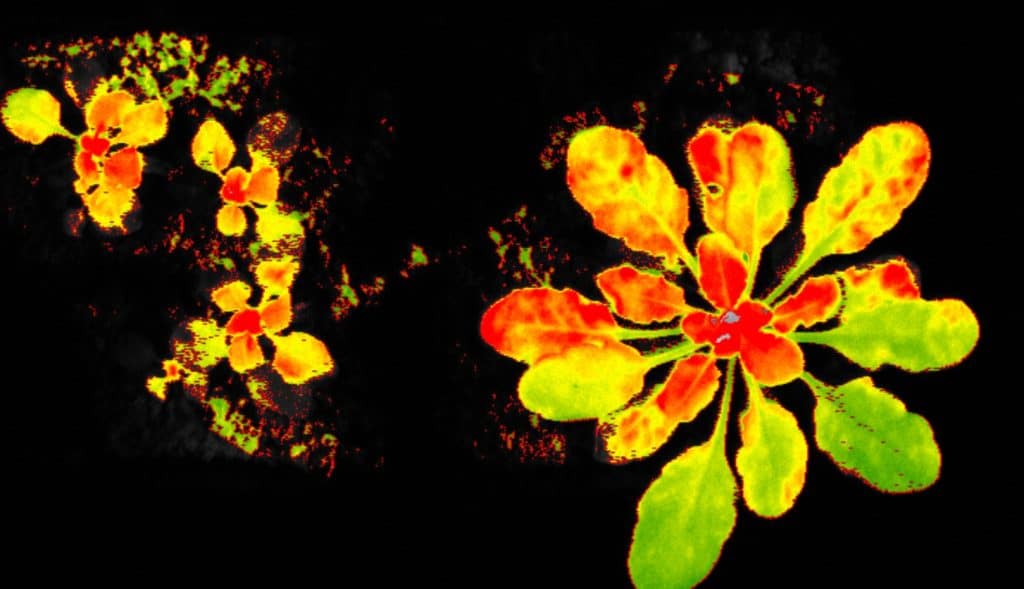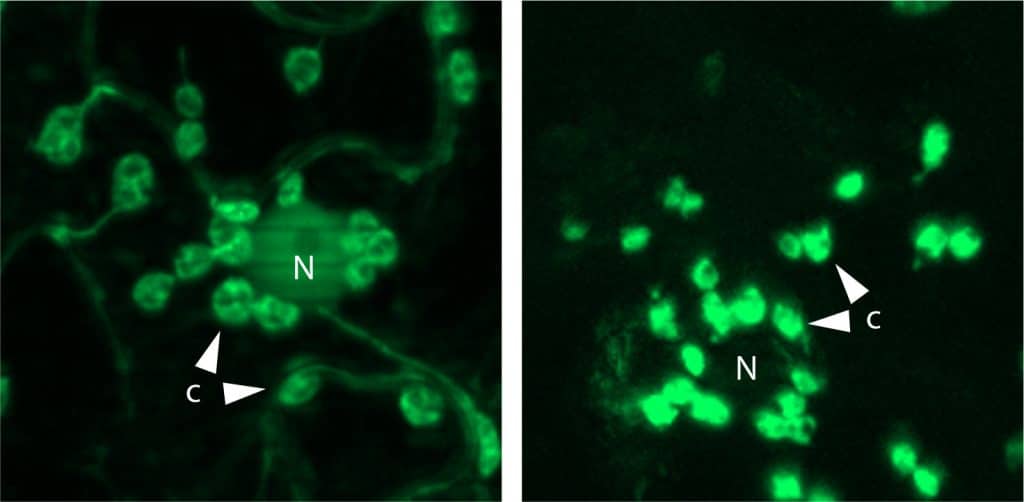A groundbreaking mechanism enabling plants to optimize their photosynthesis has been unveiled by a scientific collaboration led by the BIAM. Remarkably, this discovery involves molecules of bacterial origin, and opens promising avenues for developing agriculture that is more resilient to climate change.

Photosynthesis, fundamental to life on Earth, first evolved in cyanobacteria around 2.5 billion years ago. Cyanobacteria are the ancestors of chloroplasts, the organelles in modern plants that convert carbon dioxide into sugars using sunlight. Within this ancestral framework, plants have developed a unique ability to modulate photosynthetic activity in response to environmental changes through the synthesis of the nucleotide ppGpp (guanosine tetraphosphate), which is produced by RSH enzymes. These enzymes, inherited from bacteria, are now an integral part of chloroplast function.
In addition to this initial adaptation, another crucial mechanism evolved in the ancestors of both plants and animals, which are part of the group known as eukaryotes.
This mechanism is based on the activity of a protein kinase called TOR (Target of Rapamycin). TOR is an enzyme that adds phosphates to other proteins, adjusting their activity based on environmental signals such as the presence of nutrients like sugars and various types of environmental stress.
A Mixed Inheritance from Bacteria and Eukaryotes
“With the discovery of this mechanism, we have demonstrated that in plants, the ppGpp system from bacteria and the TOR system from eukaryotes not only coexist but are also molecularly interconnected,” says Ben Field, research director at BIAM and the senior author of the paper published in Science Advances.
In normal conditions, the TOR protein kinase represses the RSH3 enzyme. However, under certain stress conditions, TOR is inhibited, freeing RSH3 to synthesize ppGpp. ppGpp then reduces photosynthetic activity, which decreases sugar production to slow down growth in response to stress.
“This cross-regulation between eukaryotic and bacterial derived systems showcases a remarkable evolutionary synergy that allows plants to adapt by maintaining a balance in their growth and energy metabolism despite environmental and nutritional fluctuations,” adds the researcher.
Due to their very ancient evolutionary origins, the TOR and ppGpp systems influence a wide range of processes directly or indirectly: in addition to photosynthesis and growth, they play roles in responses to water stress and pathogens.
Applied to cultivated plants through advanced breeding or new genomic techniques, this discovery paves the way for developing plants resistant to a broad spectrum of stresses, a trait highly sought-after by plant breeders.

Collaboration:
1. Aix Marseille Univ, CEA, CNRS, BIAM, LGBP Team; 13009 Marseille, France
2. Aix Marseille Univ, CNRS, Plate-forme Protéomique, Marseille Protéomique (MaP), IMM FR 3479; 31 Chemin Joseph Aiguier, 13009 Marseille, France
3. Institut Jean-Pierre Bourgin, INRAE, AgroParisTech, CNRS, Université Paris-Saclay; 78000 Versailles, France
4. Università di Torino, Dipartimento di Scienze della vita e Biologia dei Sistemi; 10135 Torino, Italy
5. University of Tunis El Manar, Faculty of Sciences of Tunis; 2092 Tunis, Tunisia
Authors:
Stefano D’Alessandro*1,4, Florent Velay1, Régine Lebrun2, Delyan Zafirov1, Marwa Mehrez1,5, Shanna Romand1, Rim Saadouni1,2, Céline Forzani3, Sylvie Citerne3, Marie-Hélène Montané1, Christophe Robaglia1, Benoît Menand1, Christian Meyer3, Ben Field*1